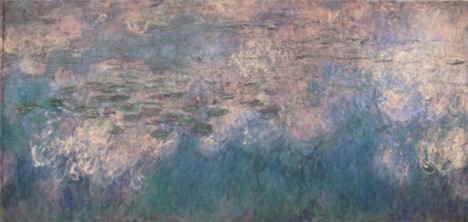If we read deeply enough, if we live deeply enough, what looks like an ending becomes an opening…and we can be the author. View the study sheet here. Watch the recording here.

At the close of the year, New York Times national religion correspondent Elizabeth Dias opened up a discussion on a profound topic on which there is no national consensus. Her article “When Does Life Begin?” highlights how the Supreme Court’s decision which overturned Roe v. Wade has unleashed at the state level a wide variety of responses to that question.
In her piece Dias notes that regardless of the specific policies adopted by various states, the basis for all those is rooted in a very American value: the individual and individual freedom. The debate focuses on the extent to which that value promotes a policy favoring the pregnant woman or the developing fetus.
Dias notes a counter-point of view to the notion that focus should be on the individual when considering the beginning of life. In contrast to the Western value of the individual as the key building block of a healthy society, some cultures emphasize the role of community.
She quotes Andrea Sullivan-Clarke, a professor of philosophy at the University of Windsor and a member of the Wind Clan of the Muscogee Nation of Oklahoma: “Many indigenous communities consider the idea of ‘person’ as what it means to be born a member of a people. With relationship at the center, the focus becomes community, and shifts to how to contribute to the people and treat children and women.”
To be alive is to be part of a community. To be unattached to one is to be dead. One of the most severe punishments described in the Bible is that of karet, to be cut off from one’s kin. To be excised from one’s community is to have no real identity, no purpose, no meaning. The Mishnah quotes Hillel: “Do not separate yourself from the community, and do not trust in yourself until the day of your death.”
There are two Torah portions which by their narrative structure describe the relationship between life and community. The first is Chayei Sarah, the Life of Sarah. It opens with the death of Sarah and then tells the story of Isaac marrying Rebecca. The second is this week’s: Vayechi, He Lived. It too opens with death, the dying moments of Jacob. But the focus is on Jacob’s blessings for each of his sons, who constitute the tribes of Israel. For both Sarah and Jacob life is defined not by their individual accomplishments but by the extent to which each was part of a web of family and community which would expand the universe of those relationships.
Torah sees life as defined less by biology than by familial, communal and spiritual attachment. At the end of their journey, Moses tells the Israelites that those who worshipped idols at Baal-peor died while those who were attached (d’veikim) to God “are all alive today.” D’veikut becomes the term in Jewish spiritual practice describing a transcendence of individual physical awareness and a unification with the Source of all.
Towards the end of his life the great Impressionist painter Claude Monet embarked on a grand enterprise. He envisioned a circular installation of vast paintings that would envelop the viewer in an expanse of water, flora, and sky. Part of the realization of that vision is the triptych Water Lilies. One of the three panels from that piece is presented here.
His water lily panels radically changed the relationship between scene and viewer. Earlier Impressionist works presented views of nature and provided the viewer with orientations, markers of location. One could view those scenes and affirm that one was separate from them, looking out at a seaside or a field: Here I am, and there is the scene the artist is presenting to me. With the water lily panels, the viewer no longer dominates the scene in size. Each panel is over 6 ½ feet tall and the triptych as a unit is over 40 feet long. The viewer is now absorbed into the scene. Monet painted each panel to its very edge, obliterating the traditional border of canvas. The water, the lilies, the light all spill off the canvas. There is no end to the reality or the experience of the garden.
This is how Monet’s art concludes. This is how the book of Genesis concludes. Not with closure, but with new opening, new life. Both remind us that to be alive is to transcend detached observation. It is to become absorbed into the scene, into the story. “My greatest masterpiece is my garden,” wrote Monet. His painting seeks to animate that garden as a living reality of which we are a part. Genesis too began with a garden. Not just that of Eden. “A river issues from Eden to water the garden” (Genesis 2:10). With the vision of attachment, we can not only see the garden that is watered by Eden’s river. We can be in it.
Join us here at 7:00 p.m. (PT) Thursday January 5 as we explore beyond the boundaries.








